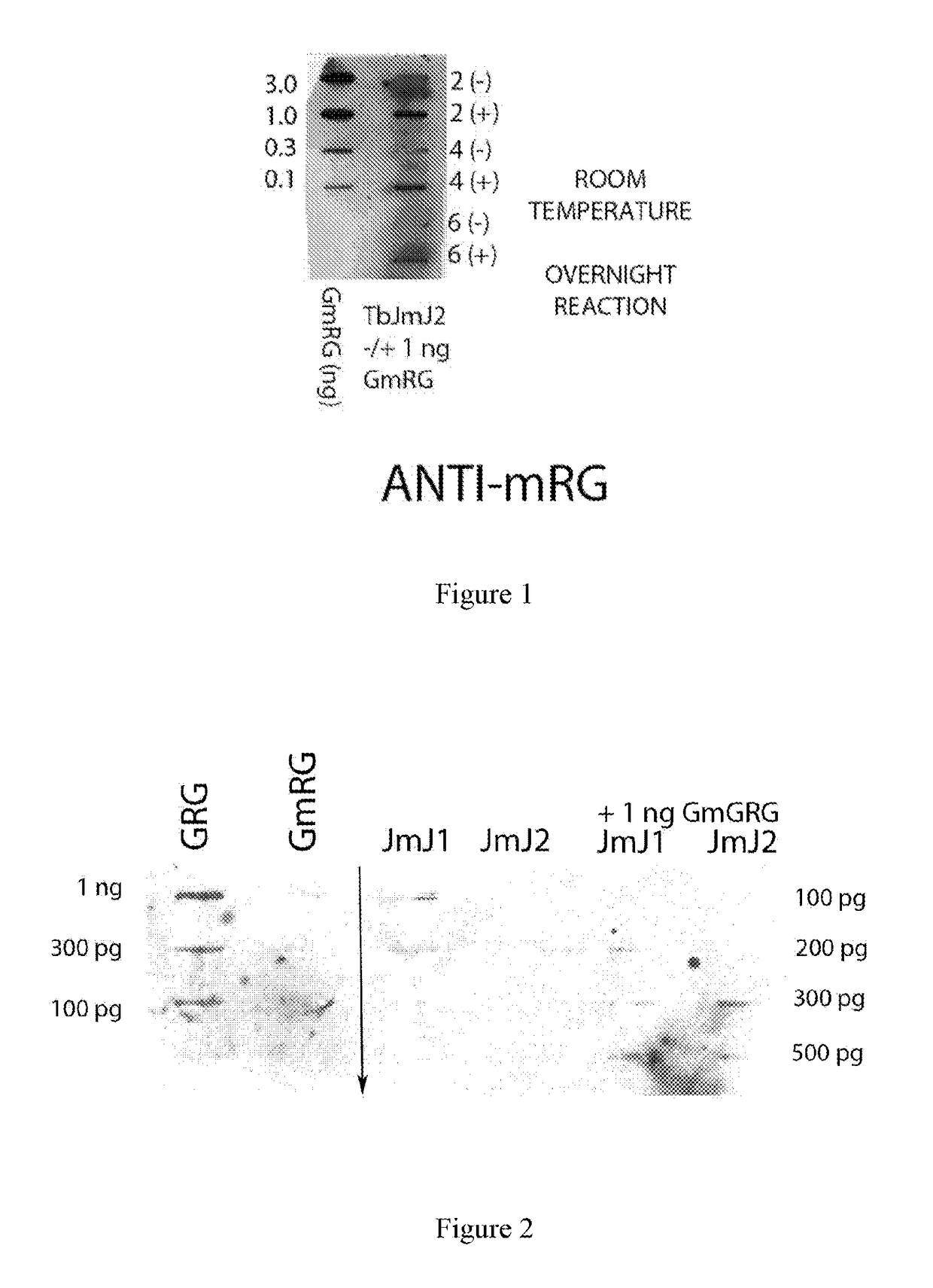Detection of protein arginine demethylase activity
a technology of arginine demethylase and protein, which is applied in the field of protein arginine methylation, can solve the problem of difficult to determine the “off rate” of methyl-groups in methyl-arginine proteins, and achieve the effect of reducing the “off rate” of methyl-groups
- Summary
- Abstract
- Description
- Claims
- Application Information
AI Technical Summary
Benefits of technology
Problems solved by technology
Method used
Image
Examples
example 1
[0023]This example describes the production of Jumonji fusion proteins that have methylarginine demethylation activity. Recombinant construction of four plasmids based on two T. brucei genes enables production of four unique bacterially expressed fusion proteins for use in experimental and drug development settings. The two genes belong to the family of Jumonji proteins (TbJmJ1 and TbJmJ2) found in primordial eukaryotes and Homo sapiens. The recombinant proteins derived from the two genes have been engineered to include the N-terminal peptide tag, maltose-binding protein, that facilitates purification from lysates of bacterial preparations. Two of the recombinant fusion proteins faithfully contain the complete cDNAs of two separate T. brucei Jumonji genes. A third fusion protein contains a site-directed mutation of histidine 745 (of SEQ ID NO:6) to alanine at the active site of the TbJmJ1 (H745ATbJmJ1), which inactivates any catalytic demethylation activity associated with the prote...
example 2
[0038]This example illustrates the method of this disclosure. Description: In the upper illustration (FIG. 1), methylarginine-specific antibody has been used to probe reaction mixtures containing 2, 4 and 6 μl of purified TbJmJ2±1ng of methylarginine peptide (GmRG). In the left column, standard amounts of the GmRG peptide (0.1 to 3 ng) have been applied to PVDF membrane. In the column to the right, reaction mixtures of TbJmJ2 incubated for 20 hours (22.5° C.) with (+) 1 ng GmRG or without (−) added GmRG were applied to the PVDF membrane. Antibody binding was determined by standard chemi-luminescence assay with light reaction captured using X-ray film detection. Comparing the (+1 ng) lanes on the right with the 1 ng standard on the left indicates a concentration-dependent decrease in the methylation status of the GmRG peptide. In the lower illustration (FIG. 2), a similar experiment was analyzed using anti-RG, antibody specific for the non-methylated form of the glycine- and arginine...
PUM
 Login to View More
Login to View More Abstract
Description
Claims
Application Information
 Login to View More
Login to View More - R&D
- Intellectual Property
- Life Sciences
- Materials
- Tech Scout
- Unparalleled Data Quality
- Higher Quality Content
- 60% Fewer Hallucinations
Browse by: Latest US Patents, China's latest patents, Technical Efficacy Thesaurus, Application Domain, Technology Topic, Popular Technical Reports.
© 2025 PatSnap. All rights reserved.Legal|Privacy policy|Modern Slavery Act Transparency Statement|Sitemap|About US| Contact US: help@patsnap.com

